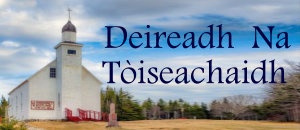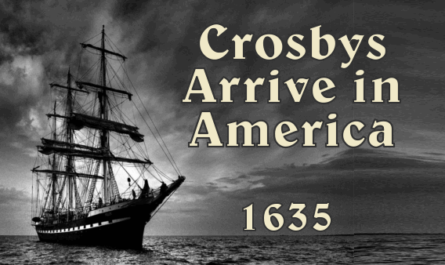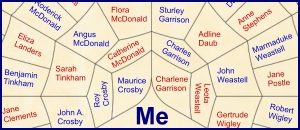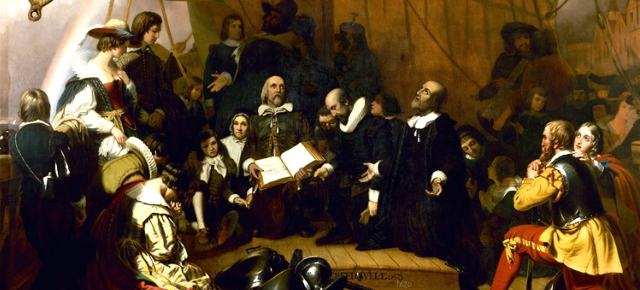 Saint Margaret of Scotland is a small Catholic church in River Denys, Nova Scotia. Built in 1841 by settlers from the Scottish highlands, some of whom were my ancestors. But St. Margaret of Scotland is one of the only signs of a community that no longer exists.
Saint Margaret of Scotland is a small Catholic church in River Denys, Nova Scotia. Built in 1841 by settlers from the Scottish highlands, some of whom were my ancestors. But St. Margaret of Scotland is one of the only signs of a community that no longer exists.
While reviewing the census records for my great grandparents (John Angus & Flora Belle (McDonald) McDonald) I noticed that there were no addresses listed for any of the families. There was nothing, geographically speaking, to differentiate one family from another; the names of the roads weren’t even included! It was then that I began to realize just how rural River Denys was in the 1800s. After spending some time on Google Maps I also realized how rural River Denys still is. Essentially, Google Maps shows a red dot at the intersection of two roads.
During my Internet searches I came across some articles about St. Margaret of Scotland church. The church was placed on the Historical Register of Canada’s Historic Places in 2009, so its history is well documented. These are some of the highlights from the registry’s web site:
It is the last remaining building from what was once a small rural community of Highland Scots pioneers who settled this area in the 1830’s. It is also the oldest wooden frame church and the earliest public building still in existence in Inverness County.
In 1833, a group of Scots from the Western Highlands and Islands arrived in this part of Cape Breton, joining their compatriots who had settled earlier along the west coast of Inverness County. Most of the prefered land had been claimed by the first settlers, this group was forced to move up the mountain to create their settlement.
With the encouragement of Fr. Alexander MacDonnell, the first resident Catholic priest in the district, they built a small church up on the mountain to serve their small community in 1841. The men cut the lumber from the nearby woods and contributed their labour. This Gaelic-speaking settlement of about thirty families was proud of its accomplishments
By 1900, the harsh winters and difficult farming conditions caused a decline in the population and in the early 1950’s, the last of the families moved down off the mountain. The houses, farms and even the little school house have since disappeared.

This is not the first mention of Gaelic-speaking people in my tree. The 1921 Canadian census asked respondents about any “Language other than English or French spoken as Mother tongue.” According to the census, my great grandparents and their two eldest children (the eldest being my grandmother, Catherine) listed Gaelic as their “Mother tongue”.
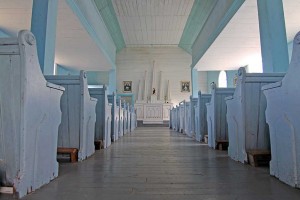
By the time of the 1921 census, Angus John McDonald had moved his family from River Denys to the northern port town of Sydney, N.S., However, the family may have left River Denys much earlier. Leo, the second child was baptized at Sydney, N.S. in 1906, four days after his birth.
The time spent researching St. Margaret’s church was well worth it, because it led to my first real information about my Scottish ancestors:
The pioneer community on the Mountain and on the River Denys Road consisted of some thirty families who had come mainly from South Uist, Eigg, Arisaig, Lochaber and Strathglass. As such, they were solidly united in both language and religion. Being devout Catholics, they very quickly decided that they needed their own place of worship.
By the late 1940’s there were very few families remaining in the area. The last regularly scheduled Sunday Mass was celebrated at St. Margaret of Scotland on June 1, 1950. As far as I know, the last two families on “the Mountain”, the Sandy “Malcolm” MacDonalds and the MacLellans, decided to leave in the early 1950’s.
The church was built about [177] years ago, primarily by the MacDonald pioneers who came here from South Uist in Scotland. There is a memorial Mass said here each year to honour the pioneers who built the church so many years ago.
— River Denys Mountain – A Sketch

St. Margaret of Scotland holds the distinction of being the first North American Roman Catholic church to hold Mass in Gaelic. In 1967, special permission was granted to allow Mass to be given in Gaelic and not Latin.
Today, St. Margaret of Scotland is mostly a tourist attraction, for people wanting to visit sites on the Historic Places registry. Mass is now once a year. Every spring a cadre of worshipers travel to the church on snowmobiles for Mass. The directions are simple: Follow whichever road you use until the pavement ends and then continue several more kilometers to the church.
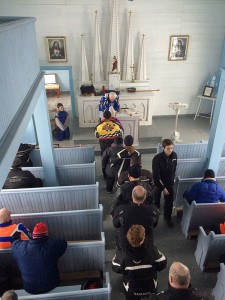
Although I didn’t learn who my ancestors were, I did learn about them and I now know from whence my ancestor’s came. I have additional avenues to research and new clues to follow… all because of the little wooden church in the woods.
Deireadh na Tòiseachaidh (Gaelic)
The End of the Beginning
Sources:
- Canada’s Historic Places
- River Denys Mountain — A Sketch, Allen J. Gillis, 1997
- Mass on the Mountain, Port Hawkesbury Reporter (2017)
- 2018 Mass on the Mountain information
Goin’ Fishing:
I reached my brick wall at the level of my 2nd-great grandparents, which isn’t all that far back. So, in the hopes that a Google search leads a researcher to me, I am adding all the details of my 2nd-great grandparents (on the McDonald/Crosby side).
Roderick McDonald, b. 19 Aug 1833 in Nova Scotion; d. 14 Feb 1918 at Judique, Inverness, N.S. and married Mary McInnis, 1865 at Judique, N.S.
Mary McInnis, b. about 1837 in N.S. ; d. before 1911; married Roderick McDonald, 1865 at Judique, N.S.
Lauchlin McDonald, b. Jun 1849, Glendale, N.S.; d. after 1919; married Isabella Catherine MacDonnell in 1870 at River Denys, N.S. Lauchlin’s brother was Dougall McDonald, b. about 1827. (Lauchlin’s father may have been Dougall MacDonald, born about 1805)
Isabella Catherine MacDonnell, b. 1846 (calculated) River Denys, N.S.; d. 20 Dec 1917, Port Hawkesbury, N.S.; married Lauchlin McDonald in 1870 at River Denys, N.S.
